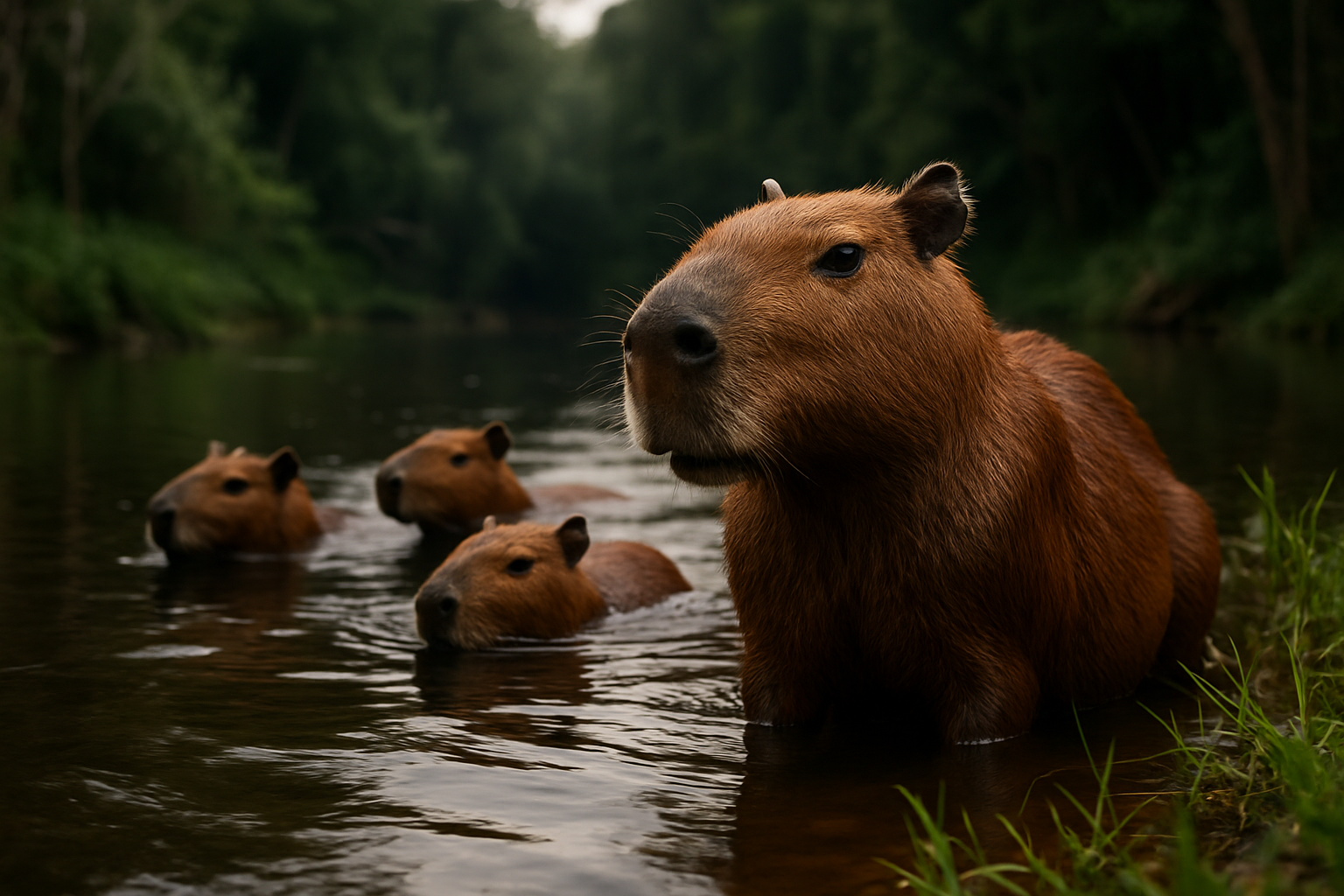The Extraordinary World of Capybara Companionship
Capybaras, the world's largest rodents, are emerging as an unexpected choice for exotic pet enthusiasts. These gentle giants, native to South America, are captivating hearts with their docile nature and unique appearance. As interest in unconventional pets grows, capybaras are stepping into the spotlight, challenging traditional notions of domesticated animals and sparking conversations about responsible exotic pet ownership.

The Capybara’s Journey from Wild to Domestic
Capybaras have a long history of interaction with humans, dating back to indigenous South American cultures that hunted them for food and used their hides. However, their transition to pet status is a relatively recent phenomenon. This shift began in the late 20th century when wildlife enthusiasts and researchers started to recognize their gentle temperament and intelligence.
Initially, capybaras were primarily kept in zoos and wildlife sanctuaries. Their social nature and ability to bond with humans caught the attention of exotic pet enthusiasts. As information about their care requirements became more widely available, a small but growing community of capybara owners emerged, sharing experiences and advice on specialized forums and social media platforms.
Legal and Ethical Considerations
The legality of keeping capybaras as pets varies widely across different countries and even within regions of the same country. In some areas, they are classified as exotic pets and require special permits, while in others, their ownership is entirely prohibited. This legal patchwork reflects the ongoing debate about the ethics of keeping wild animals as pets.
Animal welfare organizations often express concerns about the challenges of providing appropriate care for capybaras in domestic settings. These concerns include the need for large, water-filled enclosures, specialized diets, and the potential for stress in environments that don’t mimic their natural habitats. Prospective owners must navigate these legal and ethical considerations carefully.
Creating a Capybara-Friendly Habitat
Capybaras have specific habitat requirements that can be challenging to meet in a typical household setting. They need access to water for swimming and temperature regulation, as well as ample space to roam and graze. A suitable enclosure for a pair of capybaras should be at least 600 square feet, with a large portion dedicated to a pool or pond.
The cost of setting up and maintaining a proper capybara habitat can be substantial. Estimates range from $10,000 to $20,000 for initial setup, including enclosure construction, water filtration systems, and landscaping. Ongoing costs for food, veterinary care, and habitat maintenance can amount to several thousand dollars annually.
Diet and Health Management
Capybaras are herbivores with specific dietary needs. In the wild, they primarily consume grasses and aquatic plants. Domestic capybaras require a diet that mimics this natural regimen, typically consisting of high-quality hay, fresh vegetables, and specially formulated pellets. Owners must be vigilant about providing a balanced diet to prevent obesity and other health issues.
Regular veterinary care is crucial for capybaras, but finding a vet with experience in exotic rodents can be challenging. Capybaras are susceptible to certain health issues, including dental problems, parasites, and skin conditions. Preventative care, including regular check-ups and appropriate vaccinations, is essential for maintaining their health in a domestic environment.
Social Needs and Behavioral Considerations
One of the most intriguing aspects of capybara companionship is their highly social nature. In the wild, capybaras live in large groups, and this social structure translates to their behavior in captivity. They form strong bonds with their human caregivers and often thrive in households with other pets, particularly dogs.
However, their social needs can also present challenges. Capybaras can become stressed or depressed if kept alone, leading many experts to recommend keeping them in pairs or small groups. Their social behavior extends to their interactions with humans, often seeking out physical contact and enjoying activities like swimming with their owners.
The Impact of Capybara Companionship on Human-Animal Bonds
The growing trend of capybara companionship is reshaping perceptions of exotic pet ownership and challenging traditional notions of domestication. Owners report forming deep, emotional connections with their capybaras, describing them as affectionate, intelligent, and surprisingly attuned to human emotions.
This unique human-animal bond has sparked interest among researchers studying interspecies relationships. Some scientists suggest that the capybara’s social nature and capacity for companionship could provide insights into the evolutionary roots of domestication and the psychological benefits of human-animal interactions.
Future Prospects and Conservation Implications
As interest in capybara companionship grows, questions arise about the long-term implications for both the species and the broader exotic pet trade. While capybaras are not currently endangered in the wild, increased demand could potentially impact wild populations if not properly managed.
Conversely, the growing popularity of capybaras as pets has led to increased awareness of their natural habitats and conservation needs. Some advocates argue that responsible ownership can foster a greater appreciation for wildlife and ecosystems, potentially supporting conservation efforts.
In conclusion, the world of capybara companionship represents a fascinating frontier in human-animal relationships. As this trend evolves, it continues to challenge our understanding of pet ownership, raise important ethical questions, and offer unique insights into the bonds we form with animals. Whether viewed as an unconventional pet choice or a complex ethical issue, the capybara’s journey from the wetlands of South America to domestic settings around the world is undoubtedly a captivating tale in the ongoing story of human-animal coexistence.





